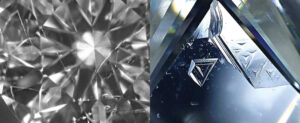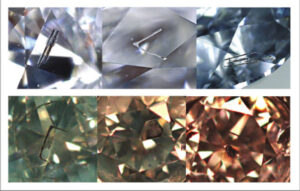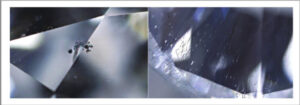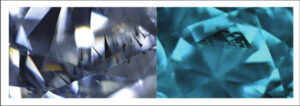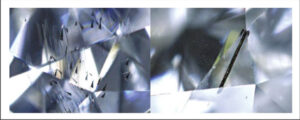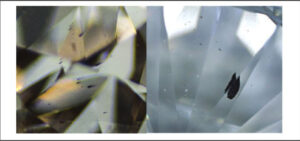Inclusions: A deep look at natural and lab-grown diamond characteristics
by Samantha Ashenhurst | August 3, 2021 10:56 am
By Maria Mrozek
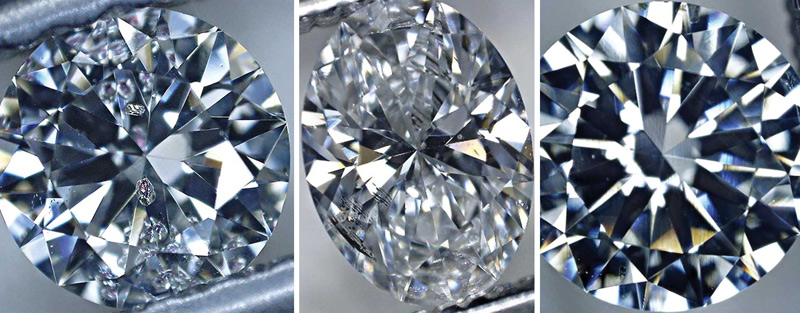 [1]
[1]For gemmologists, inclusions are among the most fascinating features observed in both mined and laboratory-grown diamonds. These are imperfections within the stones, resulting from different events occurring during their formation (again, be it in nature or in a lab).
While nothing can be done to prevent the presence of inclusions in mined diamonds (nature is nature, after all), when it comes to laboratory-grown ones, diamond manufacturers constantly aim for the highest quality of stones while trying to mimic nature.
The gemmologist considers any optically detectable internal irregularity other than fracture as an inclusion. Further, knowledge of inclusion types is essential and plays an important role in gemstone identification.
Indeed, in natural diamonds, inclusions help jewellery professionals (and the industry as a whole) learn and understand more about diamond origin, formation, and formation processes. Meanwhile, for lab-grown diamonds, these imperfections help identify growth methods.
Natural diamonds
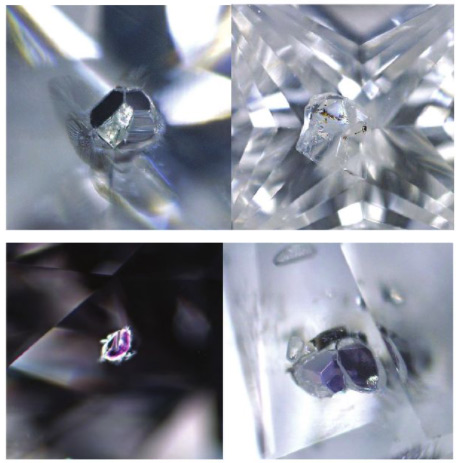 [2]
[2]Natural (or mined) diamonds crystallize in the earth’s mantle. Internal inclusions can become part of a diamond during its formation from distortion in the structure during growth.
Clarity characteristics make every diamond unique. Indeed, it is highly improbable two diamonds would have the exact same inclusions in the same location. Likewise, inclusions can help distinguish lab-grown diamonds from their natural counterparts. Inclusions such as knots, twinning wisps, diamond crystals, other minerals, naturals, and indented naturals are all evidence of a stone that has been formed naturally.
Precise analysis of inclusions can open and explain each unique diamond’s history and treatment(s). Correct identification of natural and lab-grown diamonds is incredibly important for market value, as well as maintaining consumer confidence.
Likewise, it is important for jewellery professionals to understand there is a distinct difference between inclusions in mined diamonds and laboratory-grown ones. That said, we must also remember the purpose of diamond growing is to mimic what happens in nature (and this applies to inclusions, too). There is constant race to make lab-grown diamonds as similar as possible to natural ones in every aspect.
Today, there are two main methods of growth used to create lab-grown diamonds: high pressure, high temperature (HPHT) and chemical vapour deposition (CVD).
HPHT
Diamonds grown using HPHT are created using a catalyst. Common catalysts currently in use include iron, nickel, and cobalt (though the use of other metals is possible as well).
Once the entire process is complete, one can observe metal inclusions formed by ‘trapping’ a certain amount of catalyst flux during the formation process. In reflected light, these inclusions appear white, grey, or black with a metallic lustre; in transmitted light, they are opaque. Inclusions can either appear isolated or in small groups. Often these are parallel to the outer surface of the rough crystal; however, they can also be boundaries between internal growth sectors. One interesting fact is, depending on the size of such inclusion and its location, the stone could possibly be picked up with a magnet when there is a presence of iron.
CVD
Diamonds grown through the CVD method are on a thin plate of single diamond substrate. This process occurs in a vacuum chamber, filled with a mixture of hydrogen and methane. These gases are activated by energy sources—typically a microwave. The released carbon atoms are deposited on a diamond’s substrate layer by layer.
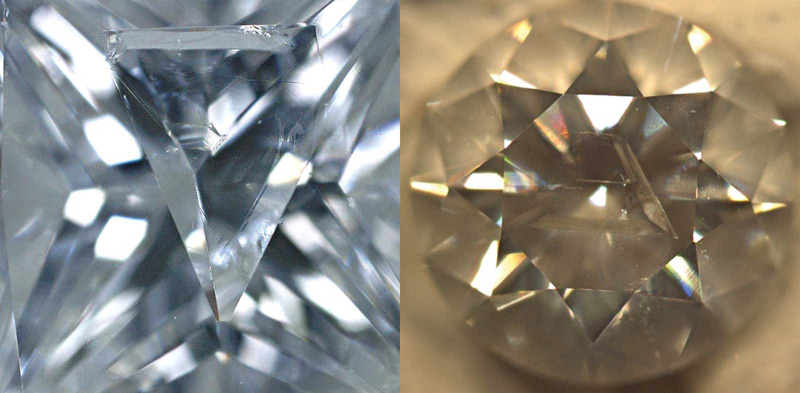 [3]
[3]CVD-grown diamonds do not have metallic inclusions. Rather, they often contain dark graphite or other mineral inclusions that are a result of their unique growth process. Graphite inclusions appear different from metallic in that they do not have a metallic lustre. Inclusions in CVD diamonds occur as small dark particles or crystals that are generally non-diamond carbon.
It is important to note the growth origin of a diamond cannot be determined by the presence or absence of inclusions alone. For example, just because a diamond is free of inclusions does not mean it is lab-grown. Conversely, just because a diamond is highly included, does not mean it is natural. Both natural and laboratory-grown diamonds can occur in all clarities.
Key take-aways
Diamond formation, inclusions, causes of colour, and even differences and similarities at the atomic level can help scientists piece together the information needed to accurately determine if a diamond is natural or lab-grown (as well as, in either case, if a stone has been treated or enhanced).
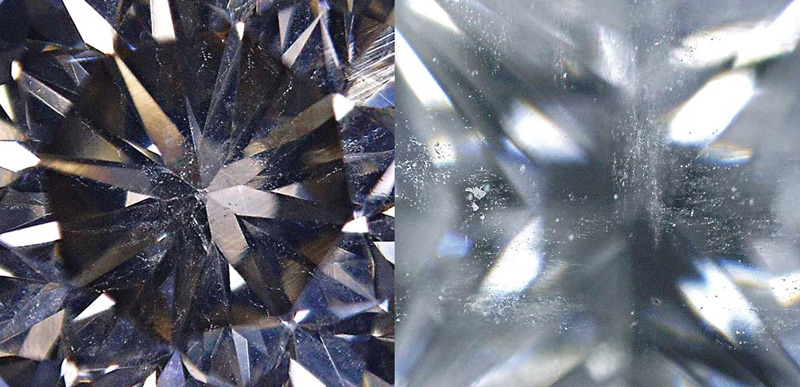 [4]
[4]Gemmologists and diamond scientists work diligently to stay ahead of developments in laboratory-grown diamond technology to see how these advancements can apply to practices of identification and disclosure. Indeed, diamonds free of inclusions can present heightened challenges when it comes to identification, as, in those cases, scientists must rely on characteristics solely at the atomic level—even though this level of spectral analysis goes well beyond the realm of the human eye. This is another reason why gemmologists have a true appreciation for inclusions: the presence of these ‘imperfections’ is like opening a book with pictures and text versus opening a book and seeing a blank page.
When examining a diamond, the first observation most gemmologists make is determining what is visible under magnification (either with a 10x loupe or binocular microscope with darkfield lighting). Hence, diamond inclusions are a critical part of gemmological analysis and decision-making, as they are typically the first thing gemmologists observe.
Knowing and understanding different inclusion morphologies and suites (i.e. what inclusions occur with others) enables the gemmologist to glean a ‘first impression,’ not only of the diamond’s clarity, but of its growth origin. Obtaining this level of knowledge requires looking at hundreds of thousands of diamonds, as there can be subtle overlaps between natural and lab-grown inclusions. In this regard, gemmologists at labs such as Gemological Science International (GSI) have an advantage, as these professionals have the opportunity to study many diamonds, building up a database of knowledge to properly identify inclusions.
A thorough understanding of diamond geology, mineralogy, and spectroscopy also help a gemmologist form an expert opinion.
Thus, it is essential for gemmologists and other jewellery professionals to be well versed in the key distinctions between natural and laboratory-grown diamonds; as an industry, we are responsible for the appropriate disclosure of a diamond (including if it is natural, lab-grown, or treated). It is equally important for professionals to know when to send a diamond to a laboratory for additional expert testing. Indeed, this industry is founded on earning the trust of the consumer; every diamond must be disclosed with 100 per cent accuracy and transparency to maintain the trust of the jewellery buyer.
Diamond inclusions, whether they are natural or laboratory-grown, have a story to tell. It is up to us gemmologists to interpret this story—and get it right every time.
 [11]Maria Mrozek is a senior gemmologist at Gemological Science International (GSI). She has three decades of extensive gemmological experience from major gemmological laboratories in the United States and has also had opportunities to work in laboratories in India and Israel. Mrozek specializes in the detection of laboratory-grown gems and is known globally though her work with natural and lab-grown documentations and detection. She brings a unique set of skills and knowledge to the gem industry and to GSI. For more information, visit gemscience.net[12].
[11]Maria Mrozek is a senior gemmologist at Gemological Science International (GSI). She has three decades of extensive gemmological experience from major gemmological laboratories in the United States and has also had opportunities to work in laboratories in India and Israel. Mrozek specializes in the detection of laboratory-grown gems and is known globally though her work with natural and lab-grown documentations and detection. She brings a unique set of skills and knowledge to the gem industry and to GSI. For more information, visit gemscience.net[12].
- [Image]: https://www.jewellerybusiness.com/wp-content/uploads/2021/07/opener.jpg
- [Image]: https://www.jewellerybusiness.com/wp-content/uploads/2021/08/mined.jpg
- [Image]: https://www.jewellerybusiness.com/wp-content/uploads/2021/08/knot.jpg
- [Image]: https://www.jewellerybusiness.com/wp-content/uploads/2021/08/cloud-1.jpg
- [Image]: https://www.jewellerybusiness.com/wp-content/uploads/2021/08/twinning.jpg
- [Image]: https://www.jewellerybusiness.com/wp-content/uploads/2021/08/HPHT.jpg
- [Image]: https://www.jewellerybusiness.com/wp-content/uploads/2021/08/HPHT_dendritic.jpg
- [Image]: https://www.jewellerybusiness.com/wp-content/uploads/2021/08/HPHT-trianges.jpg
- [Image]: https://www.jewellerybusiness.com/wp-content/uploads/2021/08/HPHT-triangles.jpg
- [Image]: https://www.jewellerybusiness.com/wp-content/uploads/2021/08/CVD2.jpg
- [Image]: https://www.jewellerybusiness.com/wp-content/uploads/2021/08/Maria-Mrozek-Senior-Gemologist-GSI.jpg
- gemscience.net: http://gemscience.net
Source URL: https://www.jewellerybusiness.com/features/inclusions-a-deep-look-at-natural-and-lab-grown-diamond-characteristics/
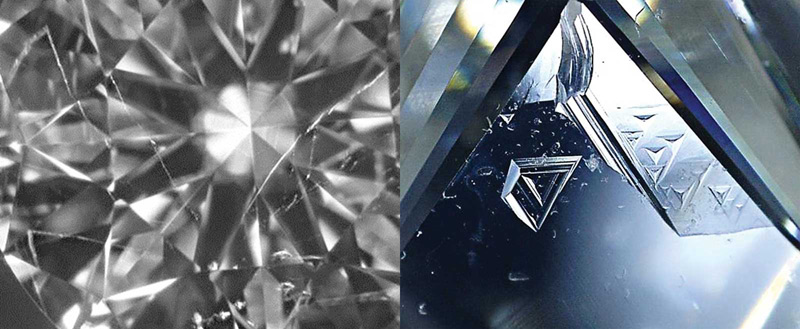 [5]
[5]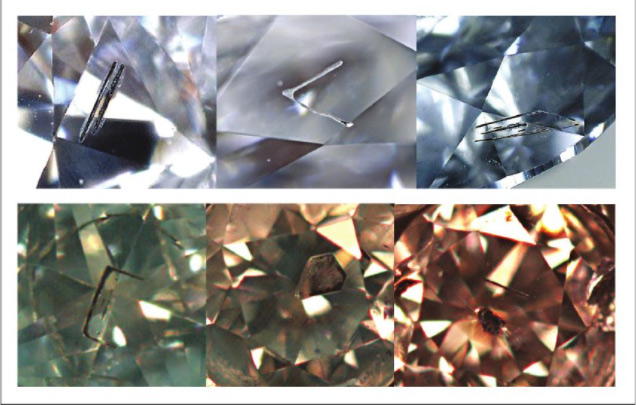 [6]
[6] [7]
[7]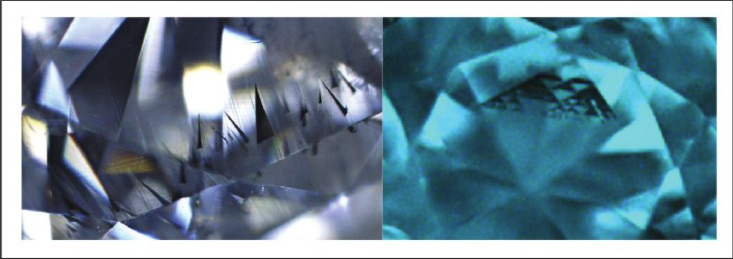 [8]
[8]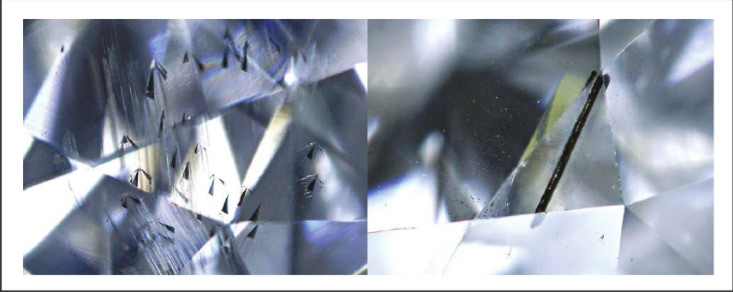 [9]
[9]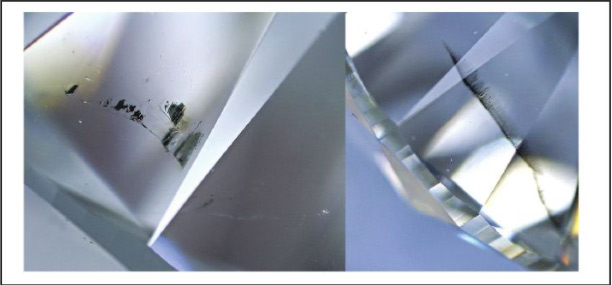
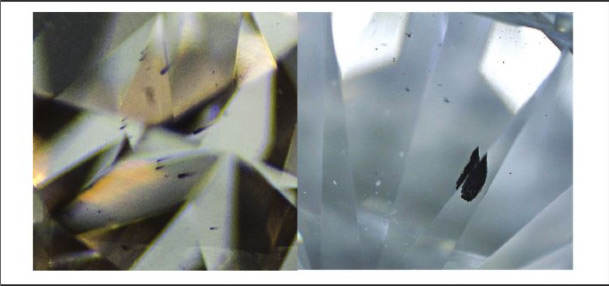 [10]
[10]